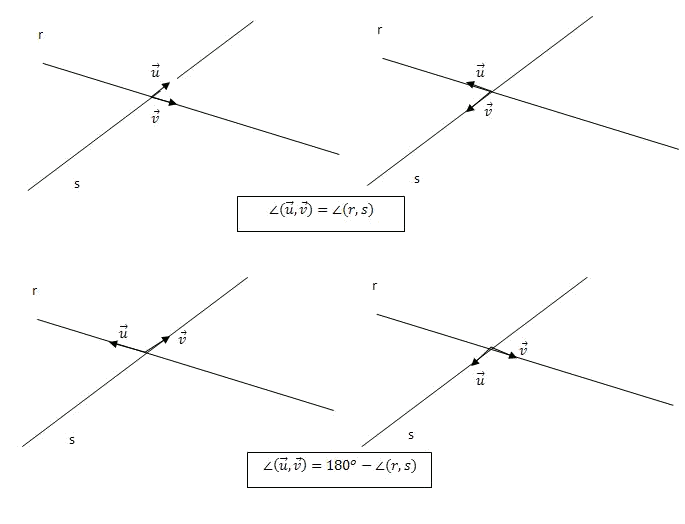Two secant straight lines and determine four equal angles two by two; this is due to the fact that they are opposite angles in virtue of the apex. The smallest of the angles and is defined as the angle between the straight lines and .

In case of the drawing, the angle between the straight lines and it would be .
A way of determining the above mentioned angle is from the scalar product of the director vectors of the straight lines and . Let and be director vectors of the straight lines and respectively.
The scalar product of the vectors and is:Now, let's observe that by taking a vector director of and one of , the angle formed by the above mentioned vectors coincides with the angle between both straight lines, if it is acute, or with its supplementary if it is obtuse:

Therefore, the cosine of the angle between two straight lines will coincide, except for the sign, with that of the angle that its director vectors form, and therefore we have that:This last step is because
This way, if we isolate in the formula of the scalar product,Note that: The scalar product between two vectors and is defined as Therefore, if we remember that the expression of the module of a vector is We have that in coordinates the expression of the cosine of the angle between two straight lines is:
Example
Determine the angle formed by the straight lines and , which equations are, respectively, and .
Let and be director vectors of the straight lines and respectively.
Then, applying the previous formula we have
Therefore, if we take the calculator we have


